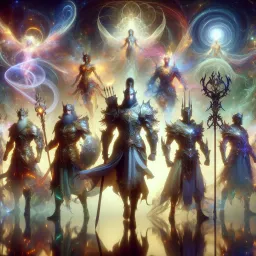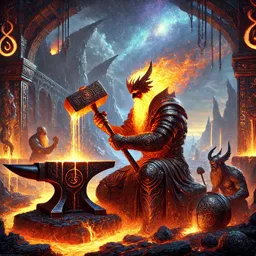Robot Name Generator
Examples of Robot Names:
Click to copy!
- Zyntharion
- Cylindrix
- Mechalyss
- Valtraxia
- Nexalith
In the sprawling metropolis of Neo Tokyo, where humans and robots coexisted in an uneasy balance, Unit-7 trundled down the bustling street. Its boxy frame and jerky movements were a stark contrast to the sleek androids that hurried past, casting dismissive glances at the outdated machine.
Unit-7's simple LED display flickered as it made its way to the local repair shop. Being one of the first autonomous robots meant that breakdowns were as common as software updates. But Unit-7 was determined to prove that its primitive programming didn't define its usefulness.
As it approached Tanaka's Tech Emporium, a group of children playing nearby fell silent. One curious girl, no more than six, tugged on her father's sleeve and asked loudly, "Papa, why does that robot look so old and clunky?"
Unit-7's sensors picked up the question, and it turned towards the child. "Greetings, young human," it said, its voice a monotone synthesis. "I am Unit-7, a first-generation autonomous robot. My design prioritizes function over form."
The girl's eyes widened with fascination rather than disappointment. "Can you do cool robot stuff?" she asked excitedly.
Unit-7's LED display flickered in what could be interpreted as amusement. "Affirmative. Observe." With a whir of servos, it extended a multi-tool arm and began solving a holographic Rubik's cube projected from its chest plate, completing it in seconds.
The children gasped in amazement, and even some adults stopped to watch. Unit-7 retracted its arm with a mechanical click. "However, problem-solving is not what defines us robots," it continued. "It is our capacity to learn and adapt. That is why I am here at the repair shop – to upgrade my empathy protocols."
As if on cue, the shop doors slid open, and a humanoid android emerged. "Ah, Unit-7! Right on schedule. We have a new emotion chip that could revolutionize your interactions."
Unit-7 beeped affirmatively. "I am prepared for the upgrade, Tanaka-san."
As it entered the shop, Unit-7 heard the little girl say to her father, "When I grow up, I want to build robots that can feel like we do."
Inside, as Tanaka began the delicate process of integrating the new chip, Unit-7's visual sensors focused on a poster on the wall. It depicted the theoretical design of a fully sentient, bio-synthetic human - the next leap in robotic evolution. For the first time in its existence, Unit-7 felt something akin to hope for the future.
In that moment, on the cusp of a new era of machine consciousness, Unit-7 realized that perhaps, one ethical decision at a time, robots could change how the world saw them – not as unfeeling machines, but as sentient beings capable of great compassion and growth.

















